What makes this trip special?
Colonial world heritage and traditional markets
Sucre
Silver mining capital of the colonial world
Potosí
The largest salt lake in the world
The Uyuni Salt Flats
Silent witnesses of Bolivia's mining heyday
Uyuni's train graveyard
Giant cacti and vizcachas
Fish & Incawasi islands
The rugged south-west
Colourful lagoons and snow-capped volcanoes
Technicolour life at 12,000 feet
La Paz
A unique pre-Columbian capital city
Tiwanaku archeological site
Spiritual cradle of the Inca Empire
The Island of the Sun
Itinerary
-
- Day Overnight
-
1
Santa Cruz de la Sierra
-
2
Sucre
-
3
Sucre
-
4
Potosi
-
5
Uyuni
-
6
Uyuni
-
7
Ojo de Perdiz
-
8
Ojo de Perdiz
-
9
Uyuni
-
10
La Paz
-
11
Copacabana
-
12
La Paz
-
- For the detail of each day click the ‘Day-by-day’ tab above.
Day-by-day itinerary for 'A Photographic Journey through Bolivia'
Visit to Tarabuco village
Full Day Uyuni Salt Flats
Bolivian desert - Hotel Jardines de Uyuni (Uyuni town)
La Paz- Tiwanacu - Lake Titicaca
Explore Bolivia's Sun Islands on Lake Titicaca
La Paz and airport transfer
Guide prices for 'A Photographic Journey through Bolivia'
| options |
based on |
all year |
low season |
mid season |
high season |
peak season |
other season |
| Tourist class hotels, private touring |
2 people sharing |
£4,205 |
|
|
|
|
|
| Mid-range hotels, private touring |
2 people sharing |
£4,385 |
|
|
|
|
|
| upgrade to upper range hotels where possible |
2 people sharing |
£415 |
|
|
|
|
|
Prices are per person and include:
- all accommodation
- meals as indicated (B = breakfast, L = lunch, D = dinner)
- all travel in Bolivia
- excursions and local guides as described
Prices do not include:
- international flights
- airport and departure taxes if these are not included in the flight ticket
- travel insurance
- items of a personal nature such as drinks, tips, laundry, etc
- any optional excursions you may buy locally
Customer reviews for
'A Photographic Journey through Bolivia'
Recent reviews are shown here from holidays based on this initial design. In each case the itinerary may have been modified
(a little or a lot) to suit the individual traveller.
Seasonal information for 'A Photographic Journey through Bolivia'
Hotels for 'A Photographic Journey through Bolivia'
Day 1
Yotau
Santa Cruz
Yotau hotel is located 15 minutes away from the airport. All rooms are suites. There is a swimming pool, restaurant, gym and spa area where guests can relax.
Days 2 - 3
Hostal de su Merced
Sucre
Average rating 4.8 (8 ratings)
Hotel Su Merced is a family-run hotel located in the heart of Sucre. This traditional house which has been converted into a small boutique hotel packs historical charm and character. Each of the 23 rooms offers guests a calm, warm and comfortable place to stay. Visitors are invited to enjoy the buffet breakfast with home-made specialities, admire the amazing city views from the terrace, or relax on the patios surrounded by birds and flowers.
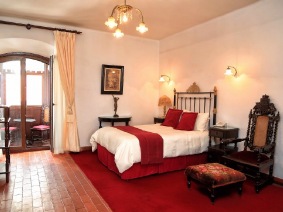
Standard room
Day 5
Hostal Patrimonio
Potosi city centre
Hostal Patrimonio POTOSI is centrally located. It is only 200 metres away from the Casa de la Moneda and other popular museums. The rooms are decorated in a simple, classic style, all fitted with central heating, a mini bar, a security box and a fully equipped bathroom.
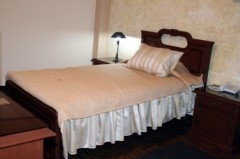
Standard single room
Days 5 - 6
Tambo Aymara
Uyuni town
Average rating 4.5 (2 ratings)
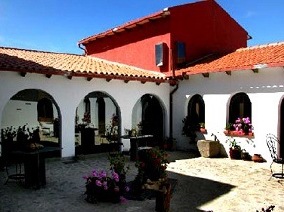
Courtyard
Days 7 - 8
Tayka del Desierto, Ojo de Perdiz
Siloli Desert
Average rating 4.1 (8 ratings)
The accommodation is basic but comfortable, and located right in the Siloli desert. From the hotel restaurant, guests can enjoy a wonderful view of the majestic desert. The hotel runs on solar energy and has a heating system based on circulating hot water. All rooms have private bathrooms with hot water.
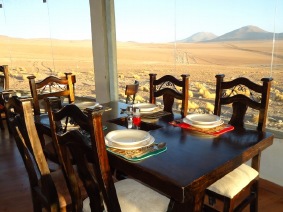
Dining area
Day 9
Tambo Aymara
Uyuni town
Average rating 4.5 (2 ratings)

Courtyard
Day 10
Hotel Naira
La Paz
Average rating 4.7 (7 ratings)
Located in a colorful, colonial-style building in the heart of La Paz. Near to the Basilica of San Francisco and a 5-minute walk from El Mercado de las Brujas, ('Witches' market').
Hostal La Naira contains 32 rooms, all including free wifi and cable TV. Room service is available.
Other aminities: international restaurant/café, pub, warm TV lounge and charm and delightful courtyard.
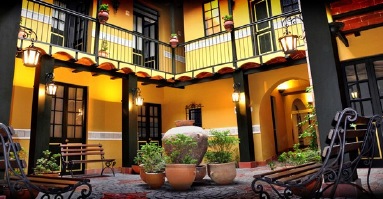
Courtyard
Day 11
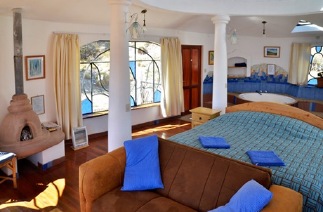
Superior suite
Day 12
Hotel Naira
La Paz
Average rating 4.7 (7 ratings)
Located in a colorful, colonial-style building in the heart of La Paz. Near to the Basilica of San Francisco and a 5-minute walk from El Mercado de las Brujas, ('Witches' market').
Hostal La Naira contains 32 rooms, all including free wifi and cable TV. Room service is available.
Other aminities: international restaurant/café, pub, warm TV lounge and charm and delightful courtyard.

Courtyard